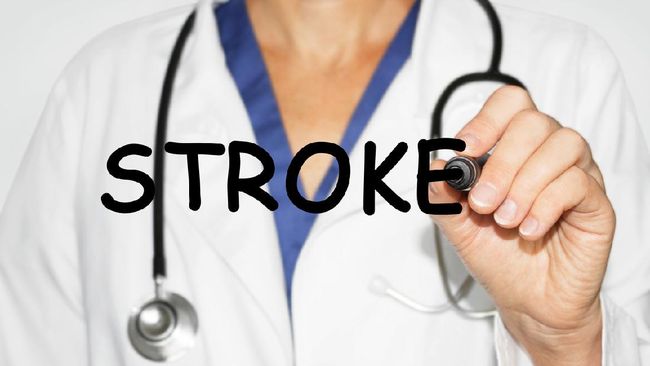Jakarta, CNN Indonesia –
Stroke can be overcome if handled properly and prevented early. However, unfortunately various myths about stroke often make handling and prevention hampered.
Stroke is one of the leading causes of death in the world. The World Health Organization (WHO) noted that around 15 million people in the world have a stroke each year. Of that number, about 5 million of them died, while others had permanent disabilities. High blood pressure accounts for the largest contribution to approximately 12 million stroke cases in the world.
In Indonesia, Riskesdas 2018 recorded a stroke prevalence of 10.9 percent. That figure increased from 7 percent in 2013.
If not handled properly, stroke patients can increase the risk of death and permanent disability. Every stroke patient is expected to be admitted to the hospital immediately after the attack and before 4.5 hours as the golden period of treatment.
In addition, like other non-communicable diseases, strokes can also be prevented by living a healthy lifestyle such as a proper diet, regular sleep, adequate physical activity, stopping smoking and consuming alcoholic beverages, and avoiding stress.
Unfortunately, the various myths that are spread in the community hamper the handling and prevention of stroke. Here are some of the myths about stroke that were shared at the World Stroke Day Campaign 2020 in collaboration with Transmedia and the National Brain Center Hospital (PON), Friday (6/10).
1. Stroke only occurs in the elderly
The older you get, the higher the risk of stroke.
Stroke is indeed more common in the elderly group (elderly). However, that does not mean a stroke cannot strike a young age.
“Currently, we find many cases of stroke at a young age,” said the specialist and neurosurgeon at PON Hospital, Professor Jusuf Misbach.
Today, strokes are becoming more common in younger age groups. Patients aged 15-45 years are included in the young stroke patient group. The 2018 Riskesdas data even recorded that 0.6 percent of adolescents aged 15-24 years had a stroke.
2. Needling into the finger can treat a stroke
As has been believed from generation to generation, the concept of pricking a finger with a needle until it bleeds is also believed to treat stroke.
“That is clearly a myth, it cannot reduce symptoms. What is there is to increase the length of the healing process,” said the specialist and neurologist at PON Hospital, Dr. Indah Apriani Putri.
Indah said no effectiveness was found by sticking a needle into her finger until it bled. “Because it has nothing to do with the brain,” he said.
Instead of treating, this habit can actually increase the length of time the patient is treated at the hospital. Stroke patients have time for 4.5 hours which is called the golden period to get the best treatment.
In addition, sticking a needle into your finger until it bleeds is also said to increase the risk of infection.
3. Stroke of hereditary disease
Many people think that stroke is a hereditary disease. This means that someone born to parents who have had a stroke will certainly have a stroke in adulthood.
In fact, having a family history of stroke increases a person’s risk of stroke. However, prevention can be done to minimize risks.
PON Hospital neuroscientist and consultant, Dr. Mohammad Arief Rachman Kemal, said that there are certain races that have genetic predisposition to stroke. The opportunity, he continued, is derived from risk factors such as hypertension and diabetes in family members.
“If he doesn’t take care of himself, so he could also have a stroke. But, if he takes care of himself, stroke can still be prevented,” said Arief.
(asr)
– .

